Jesse becomes engaged in the Creationism discussion, when asked
whether all life might actually voyage on Noah’s Ark, as reported
in an article Reuters’ excellent environment
correspondent, Alister Doyle.
FEATURE-How did Noah’s Ark float? New species cram aboard
Thu May 15, 2008 8:04am EDT
By Alister Doyle, Environment Correspondent
OSLO, May 15 (Reuters) – How did Noah’s Ark manage to stay afloat?
Estimates of the number of species on earth are surging into apparently hull-busting millions as biologists find new life almost everywhere they look, from African swamps to Antarctica.
The ever-widening menagerie is a paradox when an expanding human population, pollution and climate change threaten what United Nations’ studies say is the worst spate of extinctions since the dinosaurs were wiped out 65 million years ago.
Government officials trying to protect the modern world’s wildlife gather in Bonn from May 19-30 for a meeting of the U.N. Convention on Biological Diversity, to examine progress towards a goal set in 2002 of slowing biodiversity loss by 2010.
Most experts say the target is slipping out of reach.
Even so, wider research means finds of new species such as a legless lizard in Brazil or a Tanzanian shrew are testing biblical scholars’ calculations on how Noah squeezed all animals aboard the Ark.
“It’s of course physically impossible,” James Edwards, executive director of the Encyclopedia of Life, said of the biblical account.
The Encylopedia is cataloguing all identified species, 1.8 million so far, in a free online service (https://www.eol.org/).
“There are expectations of 8 to 50 million more species out there that we haven’t identified yet,” Edwards said. Other experts’ estimates of the numbers range up to 100 million.
But the newly found species do not compensate for extinctions.
Sigmar Gabriel, environment minister for the U.N. conference host Germany, said last week that the loss of species threatened food supplies for billions of people. He cited marine life, saying that if nothing was done there would be no commercial fishing by 2050.
Extinctions of recent decades include Australia’s southern gastric brooding frog — the females could shut off their stomach juices to raise young in their stomachs, a trick that could have held clues for curing human ulcers.
Believers in the Bible note that the Ark described in the Book of Genesis was a giant ship by ancient standards about 140 metres (460 ft) long — far from the tiny vessel depicted in many children’s books with giraffes’ heads sticking out the top.
In the biblical account, Noah safeguarded life on the planet after God, upset by the wickedness and violence of mankind, sent a devastating flood. “Everything on earth will perish,” God said, according to the Bible.
ALL CREATURES
Noah only took along land creatures and birds, not plants nor fish that make up a large part of the world’s total species.
“We’re talking about something plausible here,” said David Menton, an associate professor emeritus of anatomy at Washington University who works for Answers in Genesis, founder of a controversial Creation Museum in Kentucky.
The museum, which opened last year, depicts the Bible’s first book, Genesis, as literal truth. Its exhibits have been welcomed by those who believe that God created the heavens and the Earth in six days about 6,000 years ago.
Menton reckoned that Noah probably only had to take aboard about 16,000 creatures and said that most projected species discoveries are of tiny organisms.
“And we can leave out all organisms known to survive extensive flooding — such as insects and worms,” he said.
Even though creationists reject evolution, Menton said Noah may have taken along pairs to represent closely related “kinds” of animals such as dogs, wolves, coyotes and dingos, or just one pair for cows and buffaloes or tigers and lions.
He said Noah might have saved space by bringing along juveniles, including dinosaurs such as T-Rex or giant sauropods that could grow up to 30 metres (98 ft) long. Creationists believe that dinosaurs co-existed with humans.
The dimensions of the wooden Ark, given in cubits in the Book of Genesis, imply it was about 140 metres long, 23 wide and 13.5 high. It had three levels, meaning a total deck space of just short of 10,000 square metres (107,600 sq ft).
“The cargo capacity of such a ship would be impressive for those times and could be as large as 30,000 tons,” said Dragos Rauta, an expert at the International Association of Independent Tanker Owners (INTERTANKO).
Even so, the vessel would struggle to comply with modern marine transport guidelines, even with a few thousand creatures.
Noah and his family took along at least two of every type of animal and bird, and food for all on a voyage that lasted for months. The Bible also says that “clean” animals, or those deemed fit for eating such as cattle, sheep and goats, were taken in sevens.
Bjorn Clausen, managing director of Danish livestock shipping experts Corral Line AS, said large cows need at least 2 square metres each when held in pens for half a dozen animals.
“For animals like tigers, I’m not an expert but I’d say if you sail you’d need at least 4 square metres for a single tiger,” he said. What with other big animals such as kangaroos and rhinoceroses, the Ark would have quickly filled up.
HOT AND COLD
And zebras, penguins, vultures, pandas and antelope all need very different temperatures, food and habitats.
“Noah would have to be a very skilled heating and ventilation engineer … to have polar bears and iguanas on the same boat,” said Jesse Ausubel, chairman of the Encylopedia of Life at Rockefeller University in New York City.
“I’m not sure about the volume but … they wouldn’t all want the same conditions in their cabins,” he said.
The 2005 Millennium Ecosystem Assessment, a study by more than 1,300 scientists, estimated the number of identified species at 1.7-2 million with the final total likely to be between 5 and 30 million.
Of the named species, the biggest group by far, numbering around 1 million, are insects, centipedes and millipedes. Other big groups include plants, vertebrates — such as humans or whales — and molluscs. Mammals alone total more than 5,000 species — a few live in the sea, like whales.
In a line taken by creationists to argue that insects survived outside the Ark, Genesis says “everything on dry land that had the breath of life in its nostrils died” in the flood.
Insects do not have nostrils, so perhaps they survived by floating on uprooted trees or other debris.
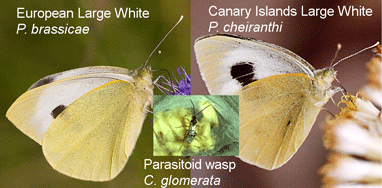 About 10% of named insect species are parasitoids, mostly wasps, but recognizing these often minute insects can be tricky. In November 2007 Conservation Genetics researchers from Czech Academy of Sciences and University of South Bohemia, Czech Republic; Natural History Museum, London; and Imperial College London apply COI DNA sequencing to identify wasps parasitizing Canary Islands Large White butterfly Pieris cheiranthi, which is restricted to local endemic ecosystem of relict laurel forests. Lozan et al reared 55 P. cheiranthi caterpillars from 2 Canary Island sites, and found half of the larva from forest margin and none from central forest were parasitized with what appeared to be Cotesia glomerata, native to Europe and introduced elsewhere as biocontrol agent although not in Canary Islands.
About 10% of named insect species are parasitoids, mostly wasps, but recognizing these often minute insects can be tricky. In November 2007 Conservation Genetics researchers from Czech Academy of Sciences and University of South Bohemia, Czech Republic; Natural History Museum, London; and Imperial College London apply COI DNA sequencing to identify wasps parasitizing Canary Islands Large White butterfly Pieris cheiranthi, which is restricted to local endemic ecosystem of relict laurel forests. Lozan et al reared 55 P. cheiranthi caterpillars from 2 Canary Island sites, and found half of the larva from forest margin and none from central forest were parasitized with what appeared to be Cotesia glomerata, native to Europe and introduced elsewhere as biocontrol agent although not in Canary Islands. 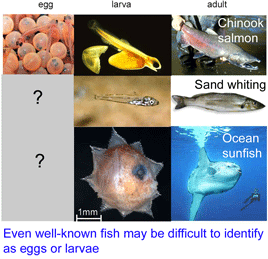 In
In 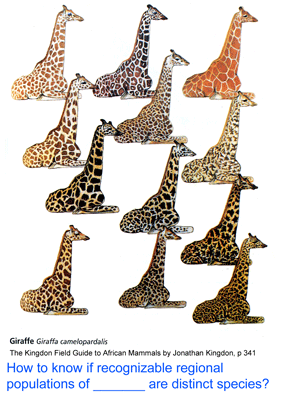 How many giraffes were onboard the Ark? Giraffes are classified as a single species, Giraffa camelopardalis, with five to nine subspecies proposed based on regional variation in pelage (coat pattern). In
How many giraffes were onboard the Ark? Giraffes are classified as a single species, Giraffa camelopardalis, with five to nine subspecies proposed based on regional variation in pelage (coat pattern). In 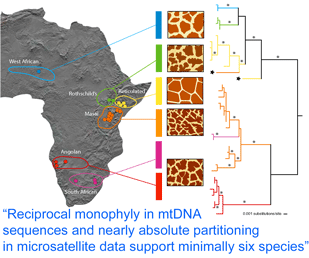 Analysis of 14 nuclear microsatellites from 381 individuals at 18 locations (it is not clear whether these are the same individuals as above) recovered the same six groups and suggested additional genetic subdivisions within some groups. Although at least some of the genetically and pelage-defined clusters have overlapping or adjacent ranges without geographic barriers, only three (0.8%) of individuals were identified as hybrids. These findings raise interesting questions about giraffe biology; for example, is there behavioral isolation perhaps based on visual recognition of pelage patterns?
Analysis of 14 nuclear microsatellites from 381 individuals at 18 locations (it is not clear whether these are the same individuals as above) recovered the same six groups and suggested additional genetic subdivisions within some groups. Although at least some of the genetically and pelage-defined clusters have overlapping or adjacent ranges without geographic barriers, only three (0.8%) of individuals were identified as hybrids. These findings raise interesting questions about giraffe biology; for example, is there behavioral isolation perhaps based on visual recognition of pelage patterns? 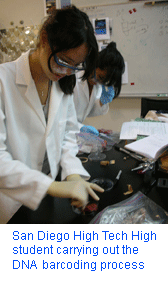
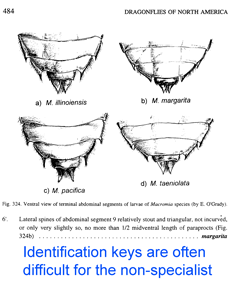 Just two years ago,
Just two years ago, 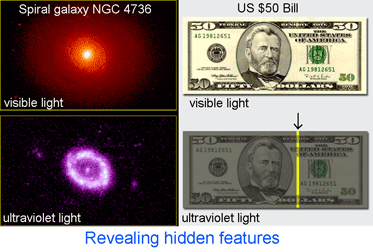 In addition to helping identify what is already known, DNA analysis can reveal what would otherwise remain hidden. In
In addition to helping identify what is already known, DNA analysis can reveal what would otherwise remain hidden. In 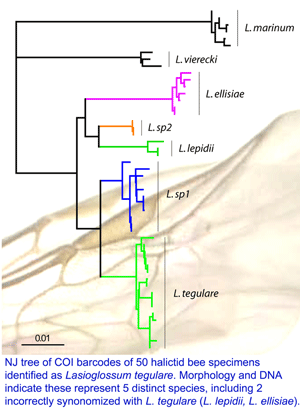 On 15 may 2008 an international assembly of bee experts gathered at York University and announced a new initiative to DNA barcode world’s bees. Some snippets from news reports:
On 15 may 2008 an international assembly of bee experts gathered at York University and announced a new initiative to DNA barcode world’s bees. Some snippets from news reports: